Trusted by Brands Around the World
Content Strategy Powered by Insights
Take the Guesswork out
of SEO Content
The more you tell people what they need to know about your industry, the stronger your position as a brand will be. But how do you know what people are searching for? With DemandJump. Our Insight Reports show you:
-
Exactly which phrases and questions people care about
-
How to prioritize keywords based on search volume and intent
-
How your keyword rankings compare to your competitors’
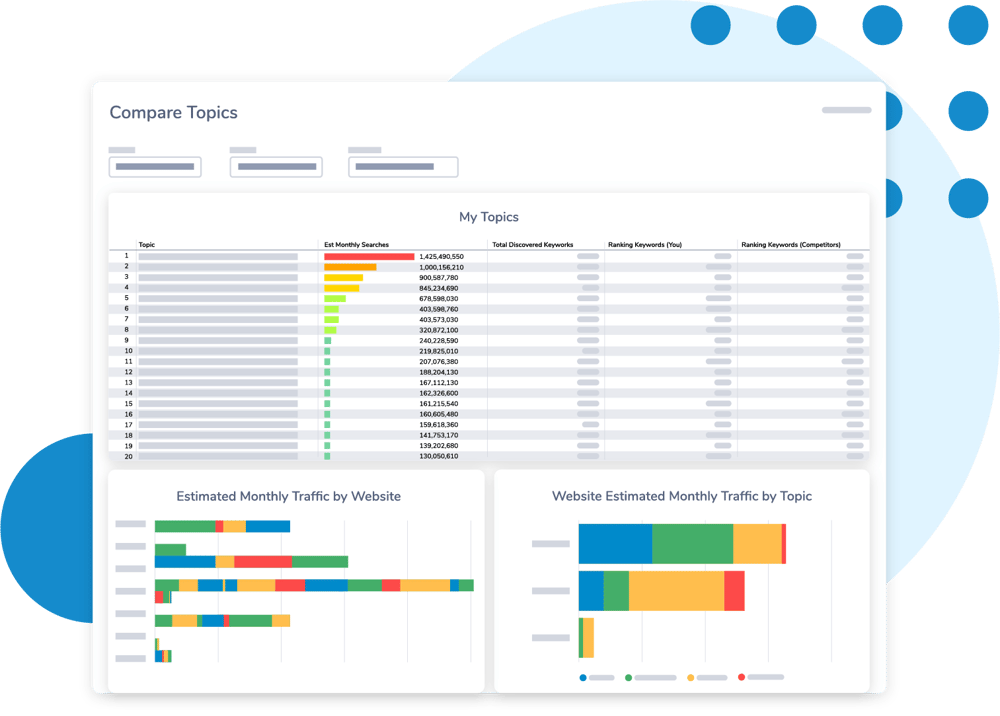
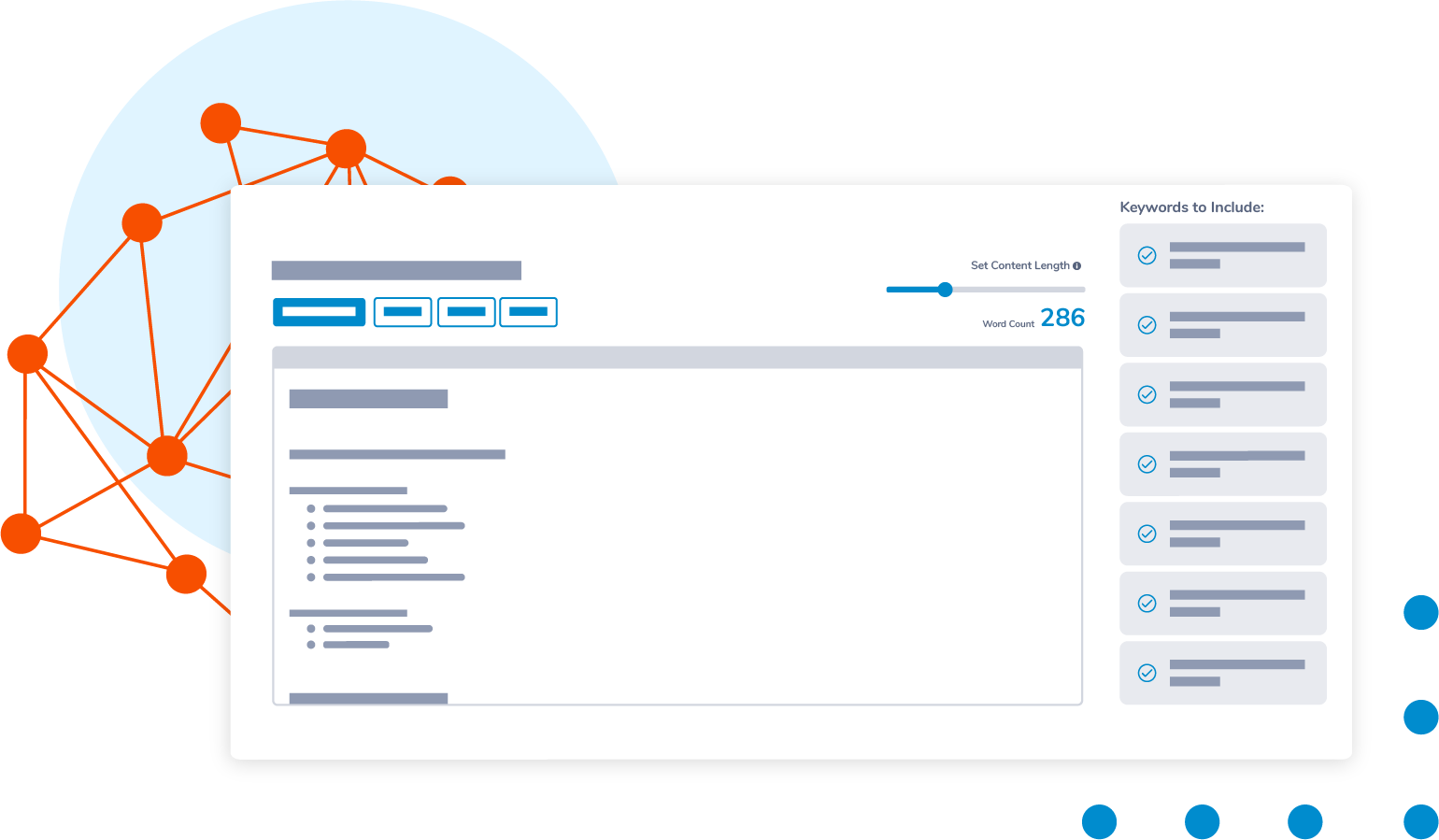
Jump Right into Writing!
The more you tell people what they need to know about your industry, the stronger your position as a brand will be. But how do you know what people are searching for? With DemandJump. Our Insight Reports show you:
-
Exactly which phrases and questions people care about
-
How to prioritize keywords based on search volume and intent
- How your keyword rankings compare to your competitors’
Content marketing should be intentional and data-driven. With DemandJump, it is.
Your Content Marketing To-Do List
Your content strategy will be simplified with the ability to create a board of your content marketing to-do's. From content creation, to backlink opportunities, to keyword optimizations.
- Save outlines for future creation
- Move tasks from stage to stage as you create
- Know exactly what to do next
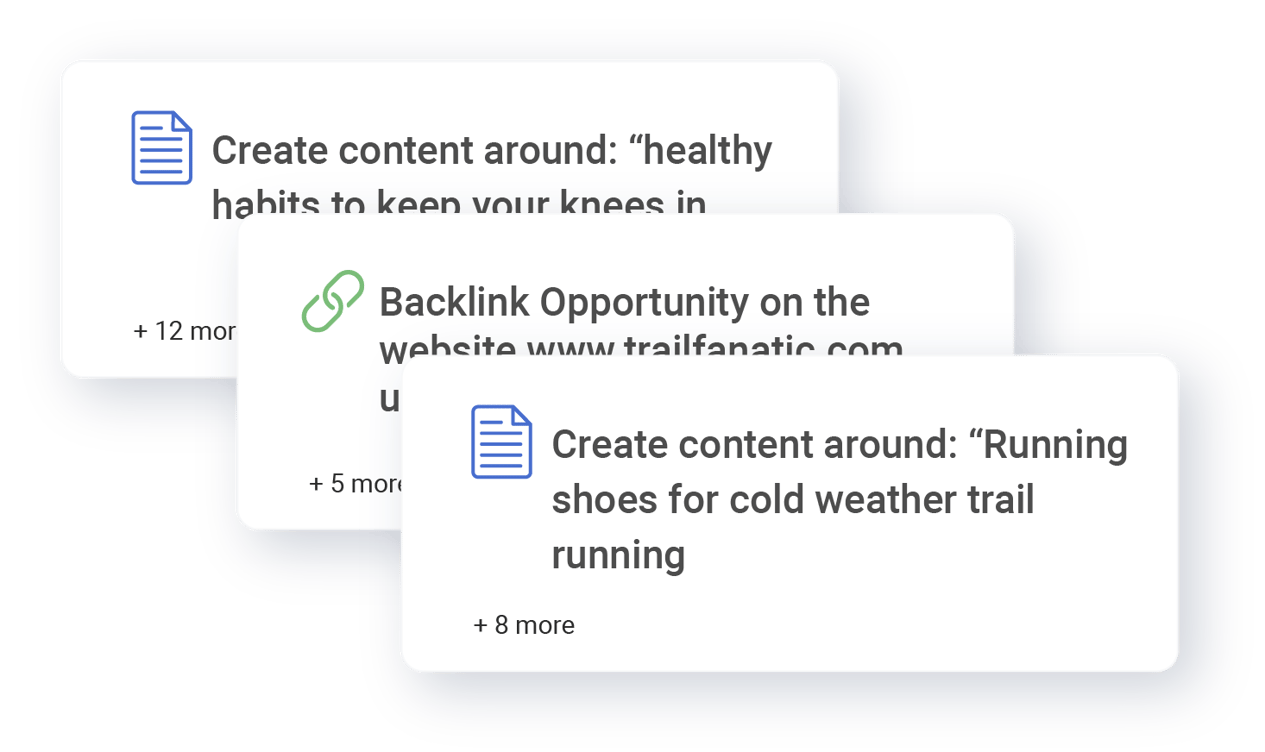
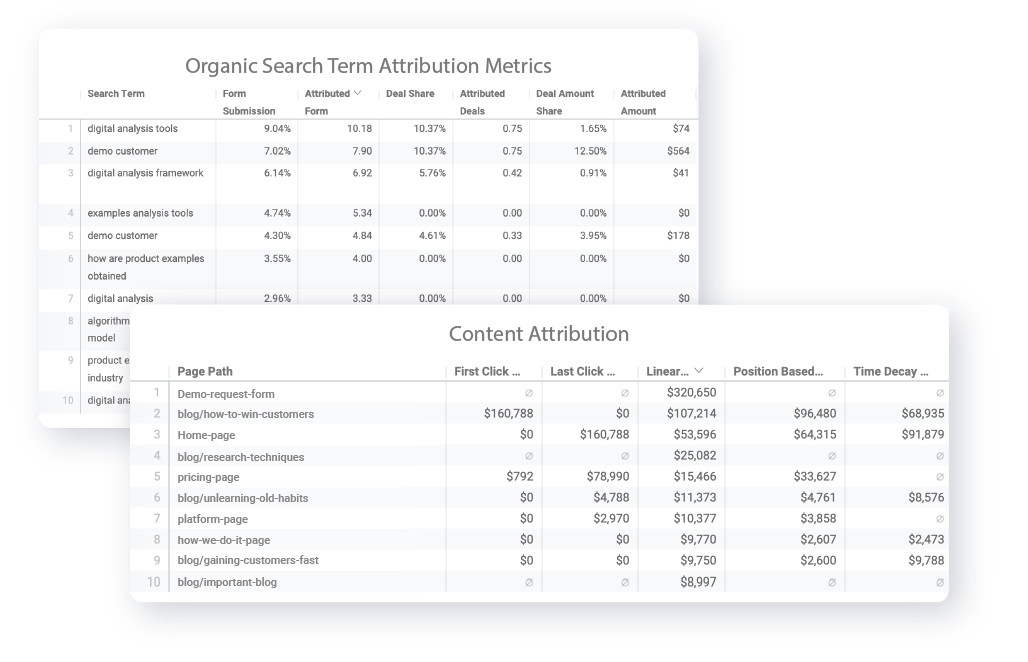
A Content Strategy That Works
Measuring the effect of your content has never been easier. With the DemandJump CRM integration you are able to see which pieces of content are driving revenue.
- Understand the revenue impact your content is driving
- See what content is working - and what is not
- Prove the value of the content you are creating
Content Marketing 101: Everything You Need to Know
Over 2,300 years ago, the famed Athenian philosopher Plato wanted to explore the nature of reality. That’s a huge topic to delve into, and it presented Plato with a challenge: How do I even begin to explore this topic with my students and others? He knew it was always better to tell a story than to ramble off with philosophical language, so he chose to engage one of his students in a storytelling exercise about people who had spent their entire lives imprisoned inside of a cave, unable to see anything but the shadows cast on a wall by objects in front of a fire. Their reality was limited by their experience… Could that be true for us living in the real world, as well?
By showing his ideas rather than telling them, he was able to communicate to his target audience clearly and bring them to a new understanding. At its heart, this is the exact same conceit involved in content marketing, today’s most powerful tool for any marketer looking to cut through the noise and build meaningful connections with their target audiences.
Through well-executed content marketing strategies, today’s marketers can borrow another tactic from Plato’s toolbox and truly meet their audiences where they are by appealing to them on every side of the rhetorical triangle: by resonating with their emotions, by engaging their intellects, and by appealing to their values. Through creative storytelling in the form of written content, resonant graphic design, and audio and video pieces, marketers can entertain, inspire, educate, and help their ideal customers find real solutions to real problems. That means more leads, more sales, and more growth for brands in any industry targeting any audience.
That’s more than any billboard ad or Super Bowl commercial can hope to do, and it’s possible only through a keen understanding of the right brain and the left alike; it’s equal parts art and science, and the most winning content strategies create full-fledged journeys that map to the real-life experiences of customers seeking to solve a problem. For your brand, that problem could be as simple as a customer needing a great new sweater, or as complex as a customer needing a software application that will unlock their business’ siloed data and help them grow with confidence.
When it’s done right, content marketing makes your customers the heroes of their own stories—and makes you that all-important mentor that gives them the nudge in the right direction. Let’s take a look at everything you need to know to become the Yoda to your brand’s Luke Skywalker and drive real, measurable growth along the way.
First stop: What is content marketing and why is it important?
What is content marketing?
Content marketing is an inbound marketing tactic that makes use of valuable content in order to provide potential customers with practical insights and authoritative perspectives. For starters, it might be helpful to differentiate between outbound marketing and inbound marketing:
- Outbound marketing is interruptive in that it aims to catch an otherwise engaged audience through quick, compelling calls to action. Think about every form of traditional advertising you’ve encountered. It’s a commercial breaking up a television show. A newspaper ad nestled in among the stories of the day. A billboard someone might see on their drive into work. Outbound marketing is quick because it has to be; it’s hoping to capture someone’s attention quickly and make an appeal for your brand’s product or service.
- Inbound marketing stands alone as a kind of product in its own right. It’s a how-to video that educates someone about how to install a new toilet in their bathroom. It’s an article that answers an important question someone might have along their way towards making a purchase decision. Inbound marketing aims to create value for audiences who are going out of their way to ask for it. It creates intersections between your brand and your audiences by placing carefully constructed pieces of content wherever audiences are searching for answers to their questions or solutions to their problems.
Content marketing is perhaps the purest expression of inbound marketing because it treats every experience with your brand not as a pitch—"Buy our product now because it’s cheap!”—but as an opportunity for your brand to help potential customers see things in a new way or solve a problem. At its core, content marketing involves three key elements:
- Understanding who your best customers are.
- Understanding how and where those best customers find solutions to their problems.
- Providing immediate solutions in the form of informative, engaging, and authoritative content.
Each one of those three elements requires plenty of guesswork, creative chops, and scientific testing sensibilities in order to create content marketing strategies and campaigns that your audiences can find, that they will appreciate, and that will lead more of those audience members to become leads and customers.
Why is content marketing important?
Content marketing is important because it introduces your brand to audiences in a context that they are more likely to appreciate and value. In the age of social media and the Internet, the average individual consumes so much content in a given day that the world has become very noisy. Where a person 100 years ago may have seen a handful of advertisements throughout the course of a normal day. They may have heard a few ads on the radio, seen a few in the newspaper, or encountered some on the city streets as they went about their day.
But consider this: Today’s digital media consumer might see an average of 5,000 advertisements every single day. That’s a lot for anybody to process, and it usually just leads to people not processing ads at all.
It’s no longer enough to throw out cold marketing messages and hope your best potential customers see them, digest them, and take action on them. It’s not that advertisements don’t work anymore; modern targeting means outbound marketing certainly has a place in marketing to this day. But the highest-performing brands have learned to let their best customers come to them in a time of need. With search engines and social media platforms working overtime to collect user data and understand what people want when they fire up their phones, that means brands have to be smart about increasing the chances of showing up for their audiences in those key times of need.
By building out interconnected webs of content—blog articles, social media posts, eBooks, infographics, podcasts, videos, and more—marketers can make sure that they play a central role as their audiences go through their journeys towards making a purchasing decision. All together, these content campaigns can help brands make sure their websites show up first when their potential customers are searching for an answer to an important question. They can empower those customers to learn more about the various resources available to help them solve their problems, and they can work to create trust along the way.
In other words, content marketing is important because it transforms any brand into an authority that will be there to provide insights whenever a potential customer starts looking for them. That takes the old-school marketing approach of shouting loudly in hopes of being heard and turns it into a new-school methodology for giving the people exactly and only what they want—quite the first impression to leave on any new customer.
What does a content marketer do?
A content marketer works to understand their ideal customers, identify the digital platforms where those customers spend their time or look for answers to problems, and create and distribute content to educate and empower those customers. For some brands, all of those jobs come together in a single content marketer role. Others utilize a wide variety of marketing experts and creatives to work together on content marketing initiatives. These roles can include:
- Content Marketing Strategist: Content marketing strategists oversee the creation of the strategies that drive content marketing campaigns. They will be heavily involved in creating audience personas (or working with other members of the marketing team to do so), identifying the various platforms where content will go (including the brand’s website, social media platforms, email marketing platforms, and more), and deciding the overall topics and themes for content campaigns.
- SEO Specialist: SEO specialists use special tools to analyze search engine traffic and identify opportunities to capture organic traffic with the incorporation of the keywords and questions a brand’s audiences are most likely to use when searching for answers to their questions. They play a central role in the direction of content campaigns, offering insights into the best opportunities brands have for creating content their ideal customers are looking for.
- Content Marketing Specialist: Content marketing specialists are all-purpose marketing professionals who connect the dots between strategy and creative to make sure the entire machine is running smoothly. They are equal parts project manager and content publisher, working with creatives to source content and then publishing that content. Content marketing specialists may also oversee a brand’s paid marketing efforts, helping to create boosted social media campaigns designed to drive qualified traffic to new pieces of content.
- Content Writer: If a brand’s content marketing department is a machine, content writers are the fuel. Content writers utilize SEO insights and direction from content marketing strategists to develop all manner of content pieces. Some content creation examples include blogs, whitepapers, social posts, scripts for videos and podcasts, research for infographics, copy for emails, and more.
- Graphic Designer: Designers are a crucial part of a content marketing team, providing custom graphics for all types of content. They typically work closely with content writers to develop featured images for blogs and the graphics for infographics. They lay out premium content pieces like eBooks and whitepapers, provide social media graphics, and work with video producers to provide visual assets for use in branded video content.
- Video Producer: Digital video is the fastest-growing type of content in 2020, and for good reason. Audiences respond well to video content and social media platforms favor video over any other content format. Many content marketing departments either work with outsourced video producers or hire their own in-house video experts to record, edit, and produce video content as part of new content marketing campaigns.
- Marketing Analyst: Content marketing is at its best when it’s being measured closely for impact. Do our intended audiences actually find the content we produce? Do they engage with it? Are we generating new leads? Should we be focusing on other personas or topics? These are the questions marketing analysts answer in order to make sure the creative work done by the rest of the team is moving the needle for the brand.
While large organizations may have the budget to support this many content marketing professionals, it’s very common for a smaller team of professionals to share the many important duties highlighted in this list. Whether you’re starting with a strategist and a designer, a couple of writers, or one SEO expert, it’s okay to start small and grow as your content marketing efforts begin to have an impact.
The beautiful thing about the work of a content marketer is that it proves itself; as you produce more content and get it out to your audiences, you’ll be able to measure the return on investment on every tactic and focus on what works best for your brand and your ideal customers.
What are the different types of content?
Different types of content include written content like blogs and eBooks, visual content like videos and images, audio content like podcasts, and more. You can also categorize content in terms of the various platforms it is used on:
- Social media content is anything you’ll publish on a social media platform like Facebook, LinkedIn, Twitter, or Instagram.
- Owned media content includes anything you publish on your own website, like web pages, blog posts, and premium content like downloadable whitepapers or guides.
- Earned media content refers to any content your brand produces that will be published on a platform you don’t own, including thought leadership pieces your subject matter experts might author on industry blogs or press releases designed to encourage journalists to write about your brand.
While there are many digital marketing examples to be found on this list, that’s just one way to come up with a list of 3 types of content. It’s important to note that content marketing isn’t limited to the digital realm. An editorial in a local newspaper that shares your brand’s opinion on an important issue is just as much a content marketing example as a video published to your Instagram account.
Likewise, there are tons of specific types of content for a content calendar for any brand. So, what are the types of content writing and publishing your brand might utilize? Here’s a not-so-exhaustive list of the most popular forms your individual content pieces might take:
- Blog Articles: Blog posts are the core of any winning content strategy. The term “blog” has almost become an outdated one; it comes from the early days of the Internet when people would publish their own public journals, or “weblogs.” Today, when brands operate their own blog, it’s a place for news and updates, but also for that critical content ideal customers are looking for. Blog posts are your best bet for answering a variety of different questions your audiences are asking in search engines, and the more consistently you publish blog articles of quality, the more likely it is that you will show up on page one of the search results your audiences see.
- Case Studies: Once a prospective customer has become familiar with your brand through your blog content and other key materials you publish, case studies are one of the best ways for them to further explore what a relationship with your brand might look like. Especially in B2B and service-based industries, case studies are an essential way to show rather than tell customers your value (remember your Plato!). Case studies could take the shape of blog posts, pages on your website, or even downloadable pieces of content.
- Whitepapers and eBooks: When you think about whitepapers and eBooks as types of content in your content marketing strategy, think about blogs amped up to 11. These are usually longer pieces that go in-depth on a specific topic and provide truly valuable, practical insights to your prospective customers. Content marketers use these pieces as lead generation tools, promising immediate answers in exchange for contact information—turning people who were once just searching for a quick blog post to answer a question into a qualified lead ready for your brand’s sales team.
- Infographics: Infographics take complex topics and make them easy for your audiences to digest in a visually engaging format. Maybe you’ve done some research on industry trends and want to share them in one place—an infographic is the perfect format. These tend to be used in blog posts, emails, and social media posts and are eminently shareable, which means your brand could end up in front of new eyes when infographics are done well.
- Branded Videos: Much like infographics, content marketers use branded videos as engaging elements to include in blog posts, social media posts, emails, and throughout their websites. Your videos could serve a variety of purposes, acting as an entirely new way to explore the same materials covered in your blog posts or case studies.
- Social Media Posts: Social media is a key platform for engaging leads and customers, and serves as a hub for all of the other content in this list. As you produce new blog posts, videos, infographics, and other key pieces of content, you can use social media to distribute that content to your audiences. Often, content marketers use digital advertising services provided by social media platforms like Facebook and LinkedIn to target users likely to be ideal customers with relevant content. Keep in mind that the copy of these posts is a type of content in and of itself, and your best opportunity to share your brand’s unique voice directly with your audiences.
- Marketing Emails: Much like social media, your brand’s emails are one of the best ways for you to nurture leads and re-engage existing customers. Use marketing emails to share other pieces of content, communicate about deals and specials, and share super-relevant information to different types of customers. The key to successful email content is to continually segment your email list based on the type of customer each contact might be or what actions they’ve taken in the past, so you always know you’re delivering the kind of content that specific contact wants to see.
When you cross-reference these two lists of types of marketing content, you could easily come up with 105 types of content—or hundreds more, depending on how you like to organize things. The key to all of this is to put yourself into the shoes of your ideal customer.
What type of content are they most likely to engage with? Maybe if you’re offering a service solution and many of your customers ask similar questions about the specific issue your brand can help them with, developing blog posts that answer those questions is a good place to start with content creation. Do you sell a product that helps do-it-yourselfers with their projects? How-to videos can provide immediate value for prospective customers while showcasing the utility of your product.
It doesn’t matter how many types of content there are; what matters is that you give your specific audience the content they want in the format that’s most desirable for them.
How do different types of digital content work together in a content marketing strategy?
Each piece of content your brand produces has a distinct role to play in your broader content marketing strategy. Just as there are many ways to categorize different types of content, it’s helpful to imagine each piece of content serving an important function at the different stages of a prospective customer’s journey towards making a purchase with your brand:
- Awareness: At this stage, a potential customer might know they have a problem to solve, and that might be all they know. As they’re searching for answers to their questions, your job is to make sure that you have plenty of great blog posts ready to answer them. Those blog posts will do the heavy lifting of making the customer aware of your brand so they can begin moving on to the Consideration stage.
- Consideration: Once a potential customer is aware of your brand, it’s time for them to consider the many ways you may solve their problem. Remember: Your solution is just one of many, and your competitors are also working to convince your potential customer that their solution is better for them. At this stage, your case studies and the rest of your website will inform your customer about your brand and its offerings and culture. Social media posts and blog posts, if the customer follows or signs up for more info, can continue to share additional insights for them to mull over while pursuing the right solution to their problem.
- Decision: Finally, a customer has reviewed information and is ready to make a purchase decision. For some B2C brands, that might be the end of the funnel; your customer has learned more about your product and is ready to buy now! For other industries, there might be some additional work on behalf of your sales team to learn more about the customer, customize a solution, and close the deal. That’s where premium content pieces like whitepapers and eBooks can sit as such a valuable piece of content, and often the customer is willing to tell you a bit more about themselves in return.
While there are many content marketing strategy examples you can follow, the best content strategy template for your brand to adopt will at least in broad strokes include pieces of content at each stage of that journey, all connected together through interlinking that gives readers the opportunity to continue diving deeper.
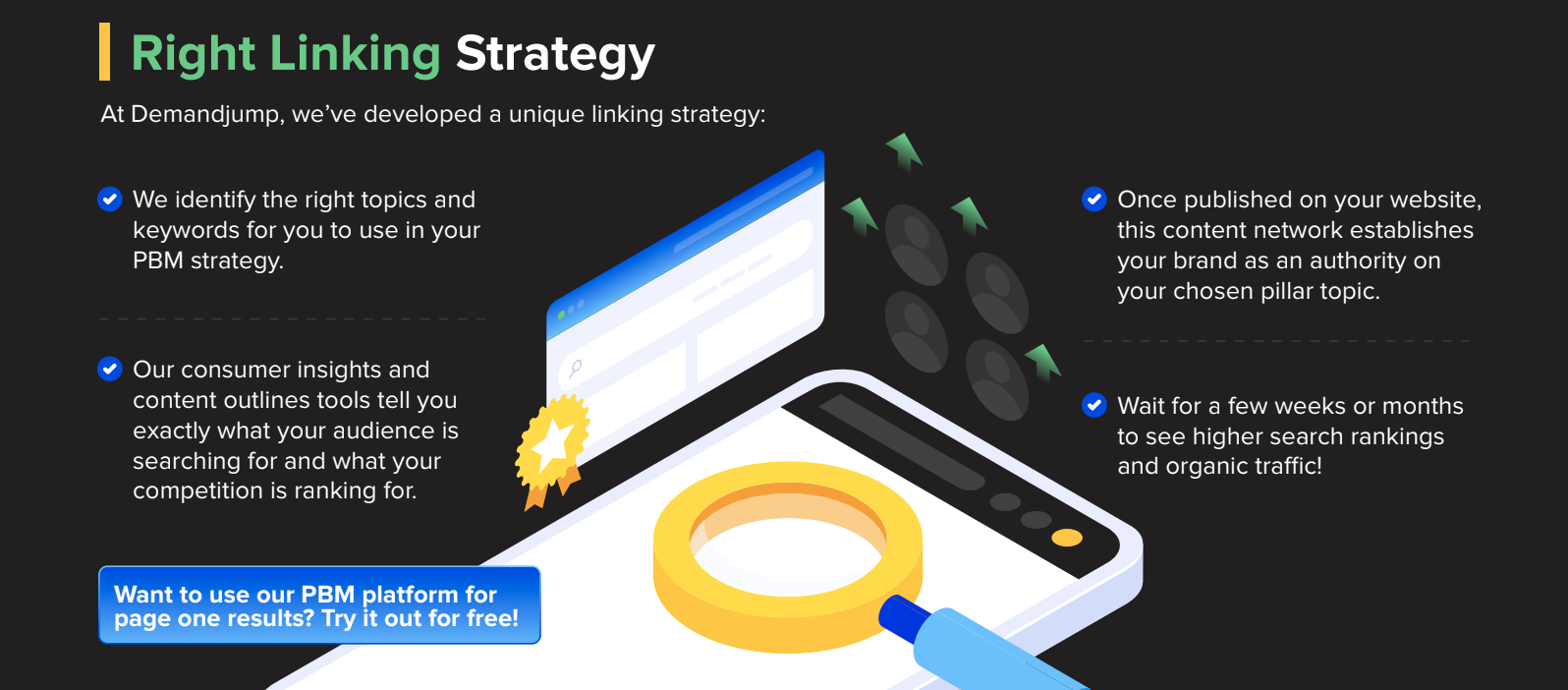
For example, if your content campaign includes a blog post at the Awareness stage that answers a critical question your customers might have, that blog post should also link to your social media profiles or invite the reader to sign up for your marketing emails. You might share a link to a case study you have that is useful for readers at the Consideration stage of their journey, and that case study might offer a whitepaper that pushes an interested reader into the Decision stage and converts them into a lead.
Whatever the individual pieces of your content campaigns might look like, the key is that each one should link to other pieces in the funnel so there’s always something else for a potential customer to do if they’re interested. Keep in mind that while it’s easy to think of a customer journey through your content as a straightforward march from Awareness to Decision, the random nature of the Internet means a new customer could enter in from a social media post they saw at the Consideration funnel, or at the top when a blog post shows up in search results.
No matter where your customers enter your content funnel, make sure they’re always able to find the next step easily—and that all roads end at the Decision stage.
Supercharge your content marketing strategy with DemandJump.
The red thread running through all of this information about content marketing is clear: The best content marketers understand their ideal customers inside and out. The better your brand can be at understanding the needs, feelings, and values of your customers, the more likely it is that your content marketing efforts will resonate with potential customers and serve as a great first word in a new relationship. Like the people living in Plato’s cave, through your content you can meet your audiences where they are and show them something they’ve never seen before. That, in the end, is what content marketing is all about.
Wondering where to start? You’re not alone. Even the most experienced content marketers are always looking for whatever tools they can get their hands on to give them better insights not just into their customers’ heads, but the strategies of their competitors and the landscape of content in their industries. That’s exactly why we created DemandJump, a content marketing platform that cuts through the noise and tells you exactly what your ideal customers are asking and looking for on search engines—and what your competitors are saying to those customers.
 From our intuitive consumer insight reports, to our content outlines that make it easy to write blog content that your customers will love and find at the top of search results, to our cross-channel analytics that give you a complete look at the customer journey through each stage of your content funnels, DemandJump takes the guesswork out of content marketing.
From our intuitive consumer insight reports, to our content outlines that make it easy to write blog content that your customers will love and find at the top of search results, to our cross-channel analytics that give you a complete look at the customer journey through each stage of your content funnels, DemandJump takes the guesswork out of content marketing.
See it in action for yourself with a free seven-day free trial and supercharge your content marketing efforts with DemandJump.
Content Marketing Resources
Content Marketing
Content Creation
Content Marketing Agency
Content Marketing Blog
Content Marketing Definition
Content Marketing Examples
Content Marketing Ideas
Content Marketing Jobs
Content Marketing Media
Content Marketing Plan
Content Marketing Service
Content Marketing Statistics
Content Marketing Strategy
Content Marketing Tips
Content Strategy
Content Writing
Types of Content Marketing
Other Resources
Channel Optimization
Consumer Behavior
Consumer Insights
Consumer Insights and Analytics
Competitor Analysis Tools
Cross-Channel Analytics
Content Marketing
Content Strategy
Content Marketing
Customer Insight Research Techniques
Customer Journey Map
Market Intelligence
Marketing Analytics Techniques
Market Research
Marketing Attribution
Opportunities of Internet Marketing
Types of Consumer Insights






